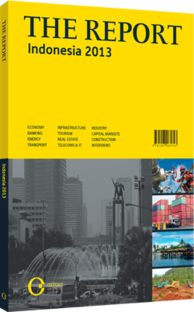Master plan projects: Sourcing the funding to help improve connectivity
Back in May 2011, the Indonesian government unveiled its new development programme for the 2011-25 period. Known as the Master Plan for Acceleration and Expansion of Indonesia Economic Development 2011-25 (MP3EI), the ambitious scheme aims to boost the nation’s economic growth through the creation of six economic corridors, one of which includes East Java.
DOWN THE CORRIDOR: The MP3EI stresses the need to build human resources and scientific research, while increasing connectivity between Indonesia’s islands, cities and towns. The overall aim is to tackle regional disparities in wealth and economic activity, and move the country into the world’s top 10 economies by 2025. East Java will benefit directly from 25 projects under the plan, and from three further initiatives for the island of Java. Many of these schemes call for private financing and development via public-private partnership (PPP) models. Under MP3EI, the province will be a part of the Java Economic Corridor (JEC), designated as a “driver for national industry and service provision”. The main economic activities in the JEC will be food and beverages, textiles, transportation equipment, shipping, and information and communications technology (ICT).
INCENTIVES: The central government is offering investors incentives to support development of the corridors, ranging from advantageous tax and Customs policies, to labour regulations and licensing.
Many infrastructure investments for East Java are identified as part of the JEC. The government is investing in the Lamongan Port expansion and the Umbulan water supply. Railroad plans include constructing 26 km of elevated track from Surabaya to Pasar Turi and Bandara Juanda; 25 km of rail development around Lapindo, and 50 km of work on Surabaya’s inner city rail. There are also plans to develop the Probolinggo Port Authority and expand Branta Port in Madura.
State-owned enterprises (SOEs) will also contribute to several projects in East Java. These include power and energy projects at PLTGU Tuban/Cepu (1500 MW), PLTU Tanjung Awar-awar (700 MW), PLTU Paiton (660 MW), PLTU Pacitan (630 MW), PLTG Grati (800 MW), PS Grindulu PS (500 MW), PLTA Kalikonto (62 MW), PLTA Kesamben (37 MW) and development of 1147 km of transmission lines until 2015. SOEs have also signed on to build toll roads from Probolinggo to Banyuwangi; from Pandaan to Malang; from Surabaya to Gempol and Pasuruan; and from Gempol to Pandaan. Road building will include routes from Waru to Wonokromo to Tanjung Perak, and from Pasuruan to Probolinggo.
SOEs are also conducting harbour pond dredging and development of container terminals at Teluk Lamong as part of the Tanjung Perak Port expansion, and will make improvements at Juanda International Airport and add long-distance ferry services to the province. On Java Island, the government and SOEs will build the 619-km Trans Java Road and the 185-km double track railway for Semarang-Bojonegoro-Surabaya. It will also increase the ICT backbone capacity for Java, with the aim of speeds up to 810 gigabytes per second.
FUNDING: According the MP3EI’s organisers, the Committee on Economic Development, Acceleration and Expansion of Indonesia 2011-25 (KP3EI), over 22% of all corridor infrastructure projects are slated for delivery directly by the private sector. Private investors are also expected to play a key role in infrastructure projects delivered via PPPs. These may be guaranteed by the government’s Indonesia Infrastructure Guarantee Fund (IIGF), and can qualify for Ministry of Finance Viability Gap Funding (VGF). A funding gap exists for another 28% of total infrastructure expenditure, signifying more opportunities for private sector investment.
INDUSTRIAL ZONES: To help investments in East Java, several industrial estates have been constructed to encourage investors to set up operations. These include a 150-ha location under development at the Surabaya Industrial Estate, the 221-ha Ngoro Industri Persada Estate in Mojokerto Regency, the 137-ha Kawasan Industri Gresik Estate, the 541-ha Surabaya Industrial Estate Benowo, the 301-ha Kawasan Industri Suri Mulia Estate and the 300-ha Surabaya Giri Industrial Park.
You have reached the limit of premium articles you can view for free.
Choose from the options below to purchase print or digital editions of our Reports. You can also purchase a website subscription giving you unlimited access to all of our Reports online for 12 months.
If you have already purchased this Report or have a website subscription, please login to continue.

